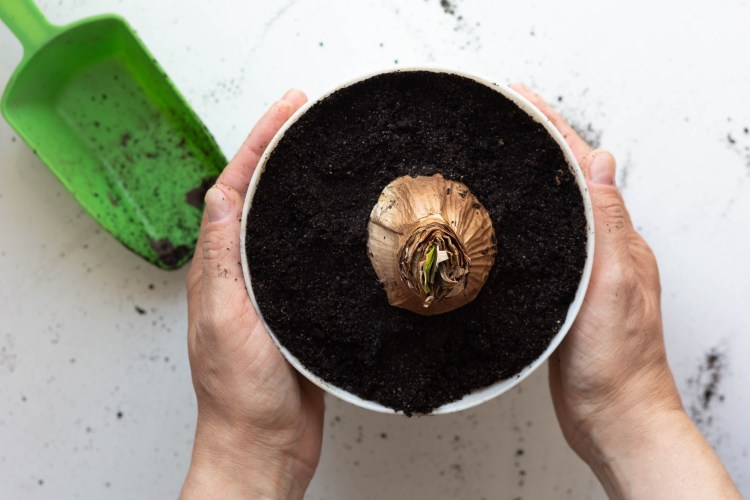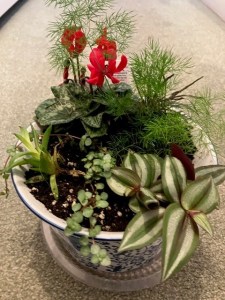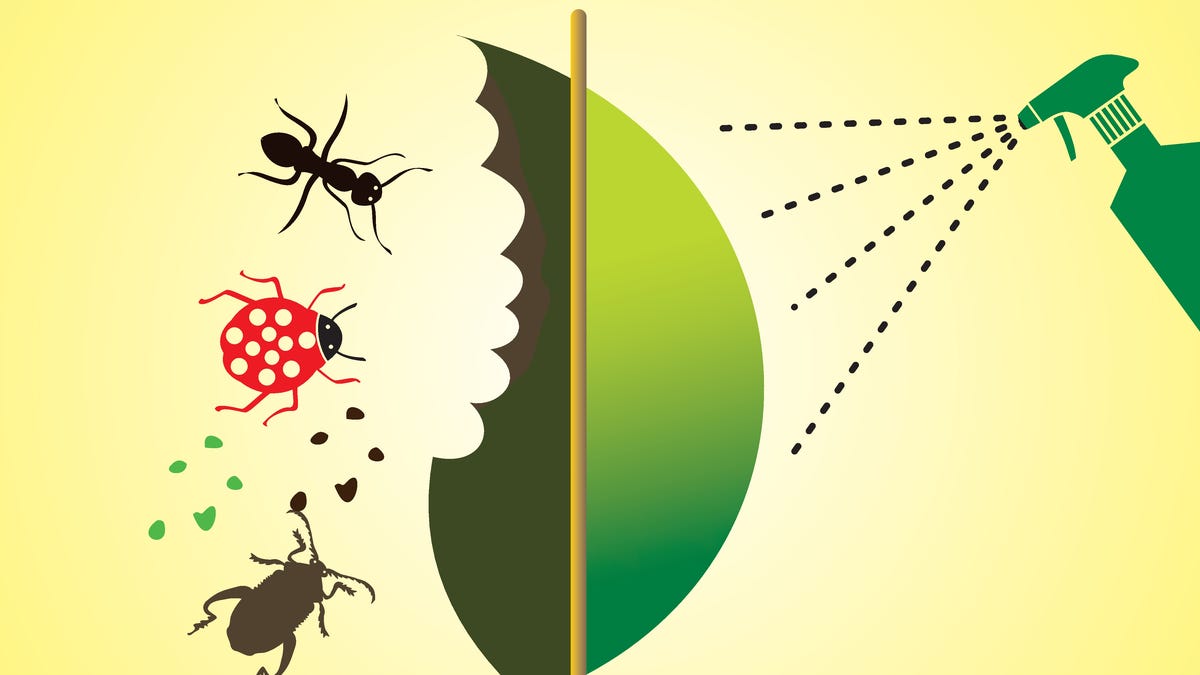
The Atwells bought several houseplants recently, including an amaryllis bulb. Buy a bulb with a green sprout visible on top for a guarantee of huge, showy flowers around the holidays. Tatiana Foxy/Shutterstock
The day I dug our dahlia beds I got a little depressed. It was the last actual bit of outdoor gardening that I will do for this season. Yes, there will be some cleanup, although we do less of that each year, and some pruning in late winter. But it’s over. Heck, some years in the somewhat distant past we’ve been snowed in by now.
To cheer ourselves up, my wife Nancy and I headed off to a few garden centers that have a good selection of houseplants. We weren’t sure we’d buy anything because we already have a lot of houseplants, and our available space almost at capacity.


The Atwell’s new dish garden. The couple bought new houseplants to help them get through the non-gardening season. Photo by Tom Atwell
At one garden center we found some attractive plants in tiny pots, about 1 ½ inches in diameter. We bought a few. They had no labels, but Nancy and I recognized most of them, and we figured we could create a dish garden and get the joy of several plants in the amount of space that usually holds just one.
One of the tiny pots held Tradescantia zebrina, formerly Zebrina pendula. Its common name, wandering Jew, is no longer used (for obvious reasons), although some people have suggested re-naming it ‘Wandering Dude.’ Also called the silver inch plant, Tradescantia zebrina is a wonderful houseplant with attractive foliage that is striped silver and green on top and is purple on the underside. The plant spreads easily, hence its name.
We also bought a cyclamen, a popular houseplant with blossoms that last long into the winter. Its red flowers will brighten our dish garden. Cyclamen grown indoors will go dormant — the foliage will die back — beginning in middle to late spring. It will stay that way for two to three months, just about the period of time you are focused on outdoor plants. As fall approaches, cyclamen will begin sprouting again.
We came home with an asparagus fern, too, which will reach about 3 feet tall. Asparagus fern is related to the vegetable. Its foliage resembles asparagus foliage after the vegetable has been harvested.
The key to a successful dish garden is plants that like similar conditions. All the aforementioned plants want fertile, moist (but not soggy) soil; cool temperatures; and filtered sunlight. We expect they’ll be happy together in our house.
We also bought an amaryllis bulb. It already had a green sprout showing on top, which almost guarantees huge, bright flowers around the holidays. We planted it in a 3-inch pot, which not much bigger than the bulb itself, with the top third of the bulb exposed. We watered it lightly – it’s important that an amaryllis pot has drainage. We’ll increase the watering when the foliage appears and reduce it when the blossom goes by.
You can buy waxed amaryllis bulbs that will bloom even if they’re not planted. We haven’t tried that — and I wouldn’t really consider it gardening.
We also have Amaryllis bulbs from previous years that we saved. Though we’ve had occasional reblooming success, we bought the new one to ensure at least one in blossom. To get them to rebloom, move the plants to a cool, dark space and stop watering, so they go dormant through March. In April and May, slowly add water and more light. Take them outside from June until just before the first frost, then bring them inside and resume watering.
Then you can turn your attention to holiday decorations.
Tom Atwell is a freelance writer gardening in Cape Elizabeth. He can be contacted at: [email protected].









